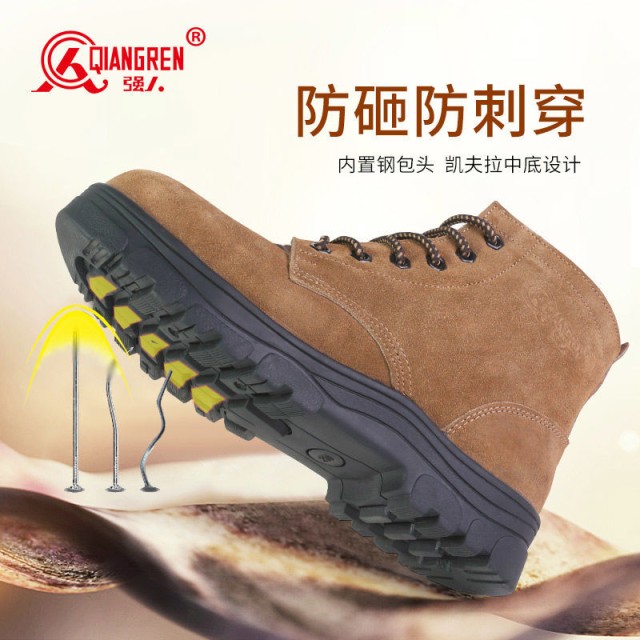Every year, workplace foot injuries cost industries millions in lost productivity. The right safety footwear isn’t just compliance—it’s a frontline defense against avoidable harm. Here’s how to match protective features to your industry’s unique risks.
Choosing Safety Footwear for Hazard-Specific Environments
Construction Site Footwear Requirements
Construction workers face impact hazards (falling tools), puncture risks (nails), and unstable terrain. Optimal boots combine:
- 200-joule toe caps (EN ISO 20345 standard) to withstand heavy impacts
- Midsole puncture resistance (e.g., Kevlar® layers)
- Deep-tread outsoles for muddy or uneven surfaces
Did you know? ASTM F2413-11 certified boots reduce crush injuries by over 60% in heavy-material handling.
Manufacturing Floor Protection Priorities
Repetitive motion and chemical exposure demand:
- Oil-resistant soles (marked "Fo" per EN 20345) to prevent slips
- Metatarsal guards for machinery-heavy environments
- Static-dissipative materials (5–1000 MΩ resistance) to prevent sparks
Healthcare & Food Industry Safety Demands
Hospital kitchens and sterile labs need:
- Slip-resistant treads (ASTM 3445-21 compliant) for wet floors
- Non-porous, washable uppers (e.g., polyurethane)
- Lightweight designs (under 800g per shoe) for 12-hour shifts
Key Protective Technologies Explained
Impact Resistance Grading Systems
Safety ratings decode protection levels:
| Standard | Protection Level | Common Use Cases |
|---|---|---|
| ASTM F2413 | Basic impact (75 ft-lb) | Light manufacturing |
| EN ISO 20345:2021 | 200-joule toe cap | Heavy construction |
Chemical/Slip Resistance Material Science
- Nitrile soles: Resist acids/oils (common in auto shops)
- TPU treads: Maintain grip at -30°C to 120°C (food processing plants)
Electrical Hazard Certification Standards
For utility workers:
- EH-rated boots (ASTM F2412-05) insulate up to 18,000 volts
- Non-conductive materials (rubber, composite toes)
Lifecycle & Comfort Considerations
Durability in Extreme Temperatures
- -40°C Arctic boots: Thinsulate™ linings with Vibram® ice grips
- Foundry boots: Reflect heat with aluminum toe caps
Ergonomic Design for 12-Hour Shifts
- Memory foam insoles reduce fatigue by 30% vs. standard foam
- Ventilated uppers (e.g., 3D mesh) prevent fungal growth
Upgrade Your Safety Footwear Strategy
3515 partners with distributors and bulk buyers to deliver hazard-specific footwear solutions—from ASTM-compliant electrical hazard boots to NHS-approved slip-resistant trainers. [Contact 3515] to equip your workforce with scientifically validated protection.
Because safety isn’t just about meeting standards—it’s about ensuring everyone goes home unharmed.
Products You Might Be Looking For:
View steel-toe safety boots for heavy-duty protection
Explore customizable safety footwear solutions
Related Products
- Wholesale Customizable Suede Safety Boots - Puncture-Proof with Velcro Closure
- Wholesale Durable Camo Canvas Shoes with High-Traction Rubber Soles
- Puncture-Resistant Velcro Safety Boots for Wholesale & Custom Manufacturing
- Customizable Anti-Smash Safety Boots for Wholesale & Private Label Manufacturing
- Wholesale Mesh Steel Toe Safety Shoes with Dial Closure Factory Production
Related Articles
- How to Choose Work Boots That Balance Safety, Comfort, and Durability for Your Job
- How to Choose Work Boots That Match Your Industry's Safety Needs
- How to Extend Work Boot Lifespan: Science-Backed Care for Safety & Savings
- Steel Toe Work Boots: Balancing Safety and Comfort for Demanding Jobs
- How to Choose Work Boot Materials for Maximum Safety and Durability



















